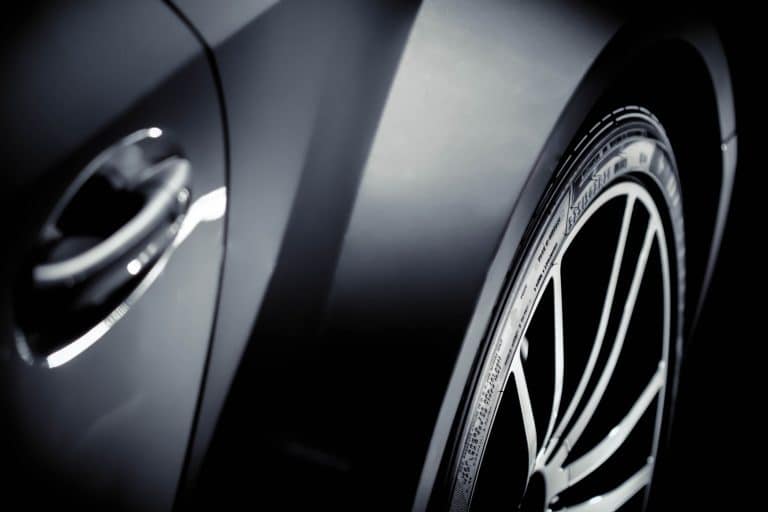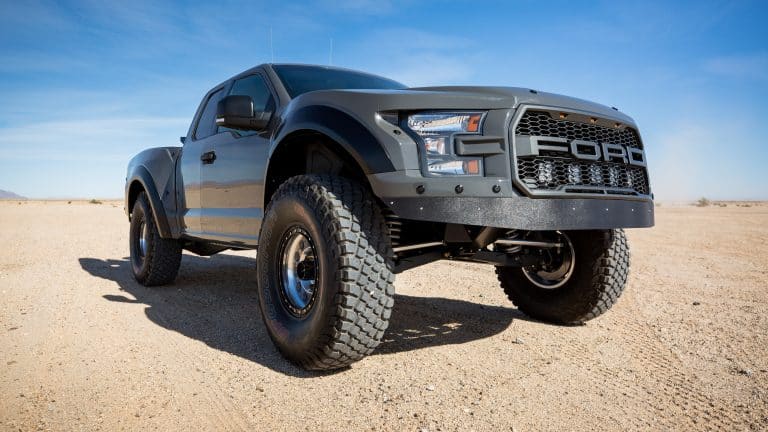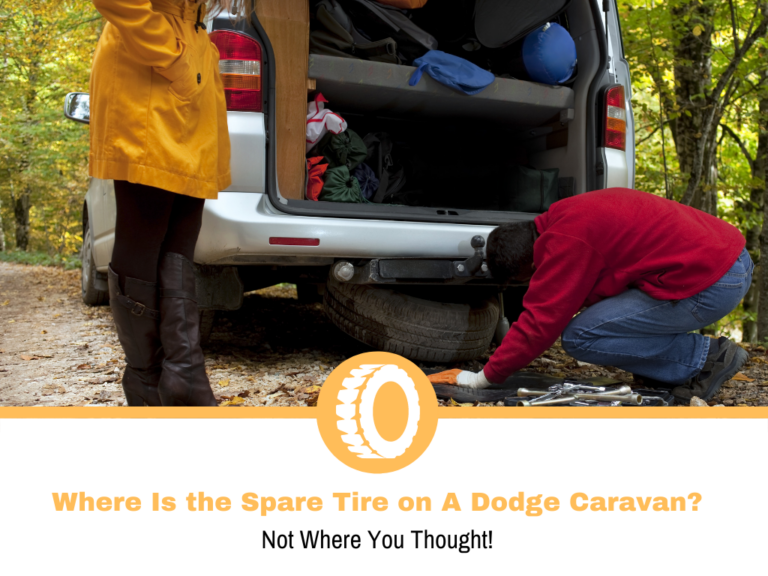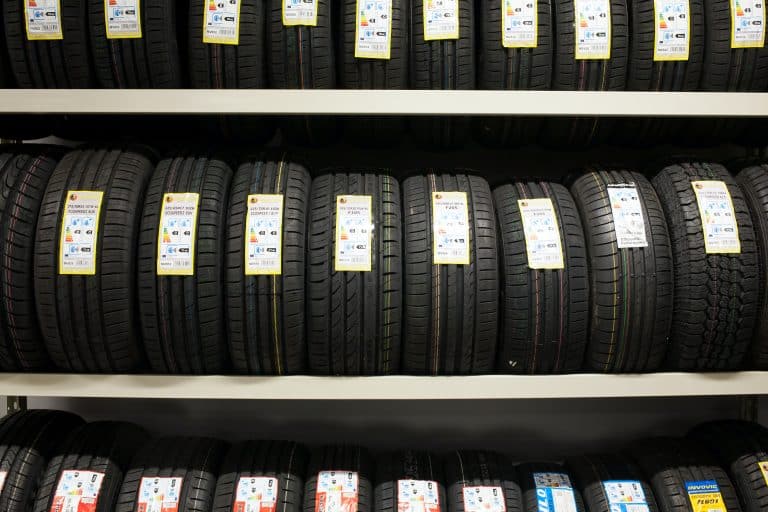What Is The Minimum Tread Depth For Front Tires?
Tires are tasked with supporting and properly distributing the weight of the car, maintaining traction, absorbing road imperfections, maintaining a safe braking distance, and making sure that the car is as agile as possible. All of this is only possible if the tire tread depth is over a certain threshold that is both legally and realistically deemed safe.
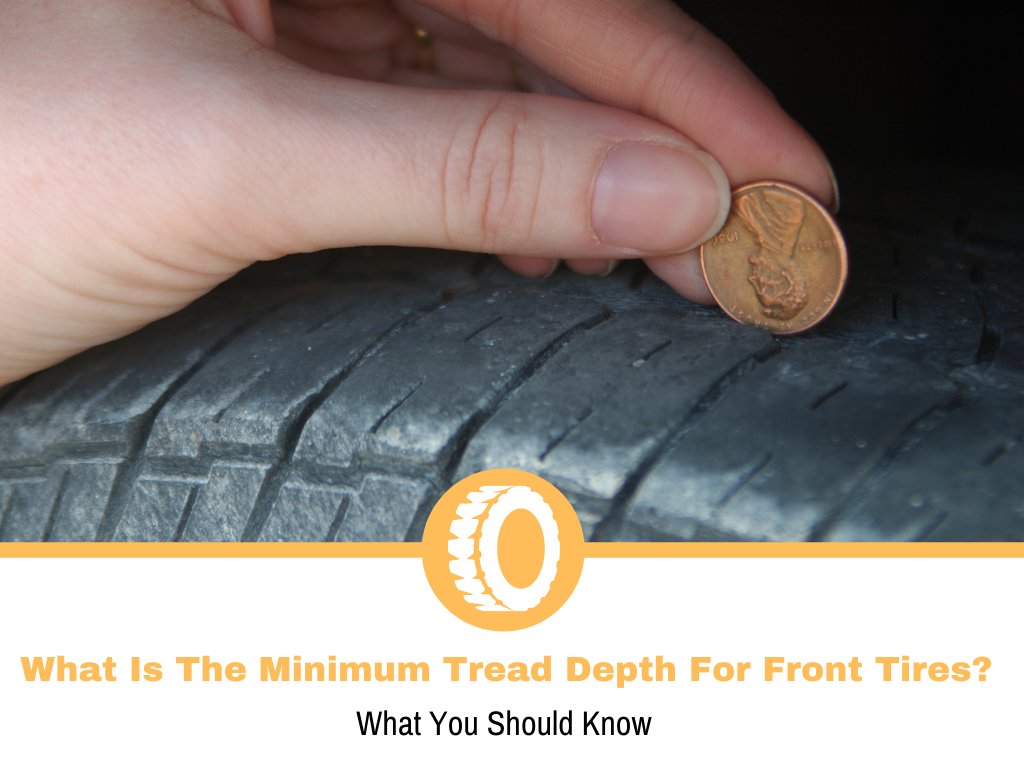
What Is The Minimum Tread Depth For Front Tires?
The minimum tread depth necessary for the front tires to perform as intended is at least 4/32-inch or 3.18mm in all the major grooves on the front tires. These are the numbers necessary for the tire to be functional in all possible environments. As stated, these numbers are the bare minimum which means that whenever your tread depth reaches 4/32-inch (3.18mm), it’s time to replace the tires.
Most US states require you to always have at least 2/32-inch tire tread depth left, no matter if it’s the front or the rear tires. However, a 4/32-inch limit is much more understandable as tires with 4/32-inch are not as unsafe as tires with a 2/32-inch tread depth are.
What Does Tire Tread Depth Affect?
- Fuel efficiency
- Reduced braking distance
- Less traction
- Increased risk of aquaplaning
- Increased risk of a tire blowout
- Subpar acceleration
How Does Tire Tread Depth Affect Fuel Efficiency?
Even though minimum tread depths usually come with a plethora of drawbacks, a bald tire actually improves your fuel efficiency. The reason being is that a balder tire has a larger contact patch with the road which virtually lower’s the rolling resistance of the tire.
This means that the tire needs less energy to start rotating and it thus uses less fuel. However, even though low tire tread depth does benefit efficiency, it makes the car extremely unsafe. So much so that all the drawbacks that come with it easily outweigh the negligible benefits you get from better fuel efficiency.
How Does Tire Tread Depth Affect Braking Distance?
The tread depth of your front tires is crucial when it comes to maintaining a reasonable braking distance. TireRack conducted a test a few years ago in which they compared two identical cars on an identical surface with the only difference being that one car had exactly 2/32-inch of tread left on its front tires while the other one had a minimum of 4/32-inch.
The test concluded that the car with 2/32-inch of tread depth took an additional 88.8 feet (1.2 seconds) to stop when compared to the car with 4/32-inch. That is rather concerning to hear, but the worse part is that a set of brand-new tires takes less than half the distance to stop when compared to tires with 4/32-inch of tread depth left.
How Does Tire Tread Depth Affect Traction?
If you take a look at a modern-day circuit racecar such as an F1 car, you will see that the tires they use are completely bald. These tires are called slick tires because they offer the most traction out of all tires, but only in the dry. If you use a comparably bald tire on a road car where the roads aren’t as beautifully paved as they are on a GP circuit, you are likely going to find yourself in a ditch in no time.
Moreover, tires with insufficient tread depth are catastrophically bad when it comes to driving in adverse weather conditions such as snow for example. Bald tires have absolutely no chance of maintaining traction in snow and ice, no matter how expensive or dedicated they are.
How Does Tire Tread Depth Affect Aquaplaning?
Aquaplaning or hydroplaning happens when a layer of water gets between the tire and the road surface which leads to complete loss of traction and the inability of the tire to respond to any of the driver’s control inputs. Tires that have low levels of tread depth are unable to channel the water through the grooves effectively which means that even the smallest puddles can cause aquaplaning.
This is obviously a huge safety hazard, but the same can happen if you go over softer ground such as mud or slush. Tire treads are designed to throw and channel water, snow, slush, and mud away from the tire, but they can only do so if the tread depth is sufficient. As such, don’t attempt to drive bald tires in wet conditions, especially at high speeds when aquaplaning can end catastrophically.
How Does Tire Tread Depth Affect The Safety Of The Tire?
Tire treads are actually structural parts of the tire that are designed for optimum weight distribution. Optimum weight distribution is necessary for the tire to even be able to last as long as modern-day tires do. That being said, if you rely on tires with insufficient tread depth for all your driving duties, you are increasing the chances of both puncturing the tire and experiencing a full-on tire blowout.
Moreover, tires with a tread depth that is lower than 4/32-inch also tend to be older which means that they are already structurally compromised, even without taking into effect that the tread depth is as low as it is. As such, it is not worth it to risk the safety of your car, yourself, and everyone else around you for a slightly longer tire lifespan.
How Does Tire Tread Depth Affect Acceleration Times?
We have already talked about slick tires and how they are able to maintain traction better in certain environments, but this is only the case for dedicated tires used for dry racing purposes. If you take a standard bald road tire and you try to accelerate briskly, you will find yourself struggling to maintain traction.
This means that even the most powerful and quickest cars out there will not be able to put the power down if they rely on insufficient tread depth. The treads on a tire basically work as claws that help the tire maintain constant traction with the surface. If those claws are worn out and inconsistent, your traction is also likely going to be inconsistent, especially from a standing start.
How To Check Tire Tread Depth?
There are a few different ways how one can check the tire tread depth, but the two most famous ones are the trusty “Penny” test and the equally trusty “Quarter” test. Both of these are common ways how most people can easily tell if their tread depths are adequate or not. It’s worth mentioning that this is not the way how most tire shops and workshops measure tread depth, so it’s not scientific, but it works.
The Penny Test is carried out by simply placing a penny into the groove with Lincoln’s head upside down and facing towards you. If you can see the president’s head in its full glory, then your tire tread depth is below 2/32-inch which is even less than the aforementioned 4/32-inch. That is why you should first try out the Quarter test.
The Quarter test works in the same way. Place the quarter within the grooves, and if the treads are touching Washington’s head, there is at least 4/32-inch of tread left. However, no matter which one of these tests you do, if your tires fail on either of them, it’s time to change tires. When you finally do replace your tires, be sure to follow these steps if you want to maximize the lifespan of the tires.
What Is The Legal Tire Tread Limit?
Many different government-mandated tire-related factors need to be above a certain threshold to be considered legal. In most US states the legal tread depth limit is 2/32-inch which means that it is actually lower than the one we advertised above. However, even though it is legal to have less than 4/32-inch tire tread depth left, it is not an advisable thing to do, no matter what the law states.
Some cars are lightweight and are typically being driven in dry and well-paved conditions. Others are heavier and are commonly being driven for commercial purposes, or even off-road. Some cars tend to spend some time on the track while others sit unused in a garage somewhere for months on end which can affect the tire in many different ways.
The 2/32-inch tread depth limit is the very last resort, but a 2/32-inch tread limit is not the same for all types of cars. Heavy and powerful cars which already suffer from long braking distances are likely going to feel a lot more unsafe with a 4/32-inch tread left when compared to something like a Nissan Leaf.
Either way, be sure to always keep your tread depth above 4/32-inch as this is more or less the bare minimum for most cars out there.
Conclusion
As mentioned in this article, the government usually mandates that your tire tread depth can not be lower than 2/32-inch, but given the fact that your front tires are the ones doing all the steering and controlling, a 4/32-inch limit is a lot more appropriate.
Either way, not all cars are the same which means that some cars will do better than others with a 2/32-inch limit. In order to be safe no matter the car you are using, a 4/32-inch should be the correct limit.
